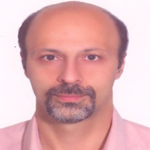Detection and prediction of land use changes using CA-Markov modelCase study: Tehran - Damavand
Nowadays,satellite imagery is used as a suitable toolforproduction of land use maps. It is also considered to be an important resource used for urban and rural land use planning. Due to the general coverage of different phenomena and natural resources, satellite imageriesplay a major role in spatial and temporal analysis. Using these images in various fields can show us their capabilities and limitations. The important point is to consider increasing advances in their spectral and spatial capabilities. Systematicexploitation of natural resources requires patterns and models of the region, so that related regulations are observedand sustainable utilization is also considered.Obviously,exact, accurate, fast and economic estimate of these changes is impossible without modern technologiesused for regional and environmental studies.Land use change modelingis an indispensable tool for environmental analysis, planning and management. Eastern parts of Tehran metropolis are among regions facing unstructuredand unscheduled constructions in Iran. Urban development and population growth have led to rapid changes in spatial patterns and have severely affected land use and natural resources.
In order to investigate land use changes, the present study takes advantage of satellite imageries, remote sensing techniques and spatial information systems.The trend of land use changeswas separately extracted from satellite imageries received in1986, 2002, and 2018.After visual interpretation and error correction,four categories were selected (residential and non-residential construction, vegetation, mountain and grassland) based on which changes were investigated. After data collection (including imageries received from Landsat satellite and TM, ETM and OLI sensors) classification and detection commenced.Then, suitable band was selected for classification, spectral reflectance curves of each land use class were evaluated and bands correlation histograms were compared.since changing bandsgives a comprehensive understanding of the classes, their relations and resolution, two-band diagram of pixels’ distribution in two different bands was used.Properties of the texture were extracted using GLCM matrix and principal component analysis was performed. Support Vector Machine was selected as an optimal classification method. Feature vectors and the training rangeweregiven to this algorithm as its input.Markov chain works well in predicting probability of change, and especiallyland use changes. Cellular automaton is also a powerful method used for detecting changes in spatial component. Thus,Markov chain and automated cells model were both used in order to predict changes in quantity and space, and land use map was predicted and simulated for 2050.Results indicate that Markov models provide useful information which can be beneficial for future land use planning.
Calculations indicate thatdue to creeping discrete growth and in some areas continuous growth, most changes in Damavand (in Tehran)have happened in the category of residential construction (9.06%) and road (1%).This increasing trend has reduced two classes of mountain/grassland and vegetation cover by 9.07% and 0.1%, respectively. After field operations and sampling with dual-frequency GPS receivers, data was introduced to software and classification was performed using support vector machines with an average overall accuracy of 96.62% and a mean kappa coefficient of 85.33%. Change detection studiesindicate that in time period of 1986 to 2002,most changes have occurred in residential and non-residential construction category. In fact, residential and non-residential construction has reached from 3.1% in 1986 to 6.1% in 2002 year, while mountain and grassland category has faced 2.96% decrease. Also, vegetation cover has decreased by 0.76%.Likewise, we also saw a 6.15% increase in residential and non-residential construction, a 6.11% decrease in mountain and grassland and a 0.22% decrease in vegetation cover of the study area in the time period of 2002 to 2018.Road category had an 81% increase in the first time period and an 18% increase in the second time period. Overall, residential/non-residential construction and roads have increased, while mountains/grassland and vegetation cover have decreasedin the time period of 1986 to 2018. Due to population overflow in recent decades, and unplanned construction, land uses like vegetation cover and grassland have changed into residential construction, and especially industrial land use in the area under study (Jajrood, Kamard, KhorramDasht, Shamsabad, Mehrabad, Pardis and Siasang).
While investigating spatial evolution and agricultural land use changes, it is important to distinguish betweenrapidly changing phenomenon, and slowly changing one.Results of the present study indicate that compared to other land uses,vegetation cove has changed more severely. Therefore, without necessary policies and actions to prevent this process,pressure on naturalresources, land use changes, and consequently destruction of valuable resourceswill result in harmful environmental impacts. This will also change the economic performance of the villages, and have many negative spatial, socio-economic consequences.
- حق عضویت دریافتی صرف حمایت از نشریات عضو و نگهداری، تکمیل و توسعه مگیران میشود.
- پرداخت حق اشتراک و دانلود مقالات اجازه بازنشر آن در سایر رسانههای چاپی و دیجیتال را به کاربر نمیدهد.


